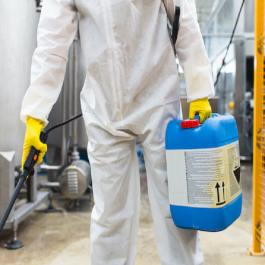The danger of irritation is constantly present. Chances are, assuming he squeaks, hums, or has more legs than you do, you don’t need to sneak into your house. Eliminating unwanted bugs with a potentially toxic substance is a short-term solution to your pest problem, but the same things that are poisonous to nuisances are often also harmful to people, especially children. Since most pesticides treat the side effects of invasion and not the root causes, they often don’t complement as well as other anticipation-based options.
Here are some general ways to cover up errors:
Step 1 – Make sure your home is clean and dry
Many insects Pest Control Chelmsford and rodents are attracted to heat, turbidity, spoiled food, and standing water, so start making your home less annoying. Empty your trash bin day after day making sure the lid is secure. Tidy up behind the receptacle as bits of food on the floor in boring corners are an attractive dinner for rodents and pests.
Make sure that all food and beverage holders on the outside of the refrigerator or icebox are securely attached to glass or plastic compartments. Remove all sources of moisture. Repair faulty taps and don’t leave dirty, wet pans in the sink. If you leave the dishes out all day, wash them in soapy water before putting them in the dishwasher. If you have a pet, brush them regularly with an insect brush and wash their bed often. Be sure to vacuum floors, carpets, and upholstery that your pet constantly interacts with.
Step 2: Seal the entrances
Insects enter homes through imperceptible breaks, cracks and openings. In all honesty, a rat can barely fit a dime-sized opening! The block section focuses on new intruders making sure they are fixed. Use silicone to seal any breaks and cracks in baseboards, trim, cabinets, pipes, gutters, sinks, sinks, and plugs.
Step 3: Try chemical-free strategies
Now that you are denying him food, shelter and access to irritation, now is the right time to increase the pressure on any waiting intruders. To tackle your pest problems without using chemical pesticides, you can:
Vacuum cleaner for single insects or houses (insects mostly suffocate).
Step 4: Choose low-risk pesticides for routine maintenance.
Assuming the problems continue, try low-harm products, which will limit the health risks for the people in your family.
It sprays corrosive boric powder into crevices and holes, gradually damaging crawling insects such as burrowing bugs, beetles and silverfish, but certainly less poisonous to people and other well-evolved creatures. In any case, you should try not to clean in areas that could generate human openings)

To control insects and rodents, try upsetting safe bait boxes, a compelling and safer decision than splashes, dust, or granules, which spread pesticide buildups. Look for one that uses a non-volatile substance, such as a boric corrosive, and be sure to keep the traps out of the reach of children. Try unsaturated fat cleaners or insecticides, which kill delicate-bodied insects like caterpillars, bugs and parasites on contact and are virtually harmless to people and well-evolved creatures unless ingested.
Step 5: Security
Powerful bug checking requires some insight into the annoyance and its propensities. More often than not, hiring an experienced exterminator can be essential. The good news is that many exterminators now offer reasonable, low-damage options that fit the lifestyle of your family, pets, and children. Whether you are an experienced exterminator or do-it-yourself, ensuring the safety of everyone in your home is important. While using any pesticide, limit the opening of everyone in your household.
